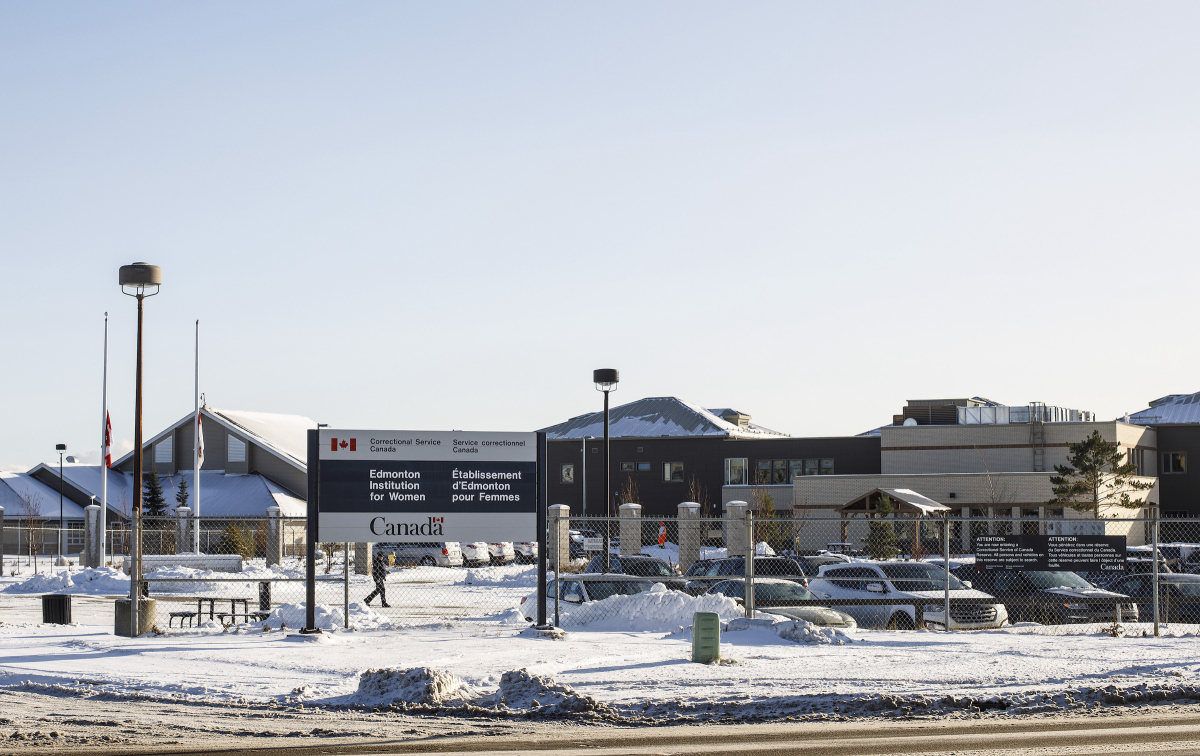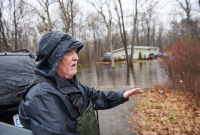Support strong Canadian climate journalism for 2025
Four years ago, I was one of many who tried to raise the alarm in the media about a Canadian crisis. I called attention to the staggering statistic that 98 per cent of girls in Saskatchewan youth jails were Indigenous and upwards of 70 per cent of inmates in Manitoba jails were Indigenous. These are unacceptable rates by any measure. At the time, 43 per cent of women in federal prisons were Indigenous.
Last week, we learned Canada has crossed a terrible threshold: 50 per cent of all women in federal prisons are now Indigenous, despite Indigenous women making up only five per cent of Canada’s female population. Will this shameful reality continue to be ignored by politicians, policy-makers and the Canadian public?
I used to think the solution to the disproportionate over-representation of Indigenous people in Canadian jails and prisons was largely a policy problem. That by changing policies, and making sure existing laws were enforced properly, Canada could address the crisis of Indigenous mass incarceration. But the time for incremental policy change has passed. What Canada needs now is “decarceration,” and we need it urgently.
We’ve known about this problem for decades. This isn’t an issue that needs more study.
In 1999, the Supreme Court of Canada called the over-representation of Indigenous people a “crisis.” The federal and provincial/territorial governments have commissioned dozens of studies, inquiries and royal commissions over the years that have all raised similar concerns, such as when the Aboriginal Justice Inquiry declared: “The Canadian criminal justice system has failed the Aboriginal peoples of Canada.” Most recently, the National Inquiry Into Missing and Murdered Indigenous Women and Girls (MMIWG) sounded the alarm on the high rates of Indigenous people in Canadian prisons. As MMIWG chief commissioner Marion Buller put it: “It’s not that they’re inherently criminal, it’s that they’re poor.”
This is also not a problem that can be solved by the slow and (sometimes) steady drip of pilot projects, policy and procedure changes and “sensitivity training.” We’ve been there, done that — civil society organizations, judges and politicians — repeated and revived them for decades. Where they have been scaled and implemented meaningfully at all, they clearly did not have the intended effect.
At times, policy changes have made things worse rather than better. Even where governments have not actively exacerbated the problem, the situation has not improved.
The Trudeau government claims to have no more important relationship than its relationship with Indigenous peoples, yet it is under this Liberal government that Canada now has as many Indigenous women in prison as non-Indigenous women.
A central feature of the inability of Canadian governments to meaningfully address the over-representation of Indigenous people in jails and prisons is that for Canada and its institutions, Indigenous peoples and their interests remain — 155 years after Confederation — primarily a colonial concern.
Much of the Canadian economy is built on the exploitation of Indigenous lands without the consent of Indigenous peoples and without returning any benefits to Indigenous peoples. The so-called protection of Indigenous children continues to result in the forced displacement of disproportionate numbers of Indigenous children from their families and communities to primarily non-Indigenous families disconnected from their culture and language — an active and immoral perpetuation of the legacy of residential schools and the ‘60s Scoop.
The colonial order is maintained by criminalizing and incarcerating Indigenous people at a rate that even the most dedicated cheerleaders for the existing order would surely have difficulty justifying.
After decades of study and calls for reform have led only to worsening over-representation of Indigenous people in jails and prisons, what remains is systematic “decarceration” — the intentional and directed reduction of the number of Indigenous people in jails and prisons as a policy goal in and of itself.
Decarceration projects are being successfully implemented in some parts of the United States, and there is no principled reason why it could not be effective here as well.
Decarceration must guide the operation and oversight of the Canadian criminal justice system.
This means ending the use of mandatory minimum sentences retroactively. It means judges and crown attorneys must ensure the presumption of innocence is upheld, and those charged with crimes must, in all but the most exceptional of circumstances, be released.
Most importantly, decarceration requires that alternatives to incarceration must nearly always be the first choice when courts determine sentences for Indigenous peoples convicted of crimes.
The impacts of colonialism are not merely a legacy of past wrongs. Colonialism is an ongoing project, perpetuated by the federal and provincial/territorial governments, and which continues to penalize Indigenous peoples in Canada for the mere crime of existing.
Through decarceration, Canada may begin to forge a new path.
Corey Shefman is a lawyer for Indigenous peoples, persons and organizations at Olthuis Kleer Townshend LLP.






Comments
" the staggering statistic that 98 per cent of girls in Saskatchewan youth jails were Indigenous and upwards of 70 per cent of inmates in Manitoba jails were Indigenous." Clearly this is not mostly a 'justice system' problem. The number of non-indigenous women in prison has plummeted over the last 5 years - what caused this? It's what caused the indigenous percentage to climb precipitously. But indigenous women represent 5% pf the population, but numerically, until v. recently 10% were in jail - that's a 100% over representation.
So it is a result of colonialism: agreed. But we won't unwind that with out care and attention - and these both take time.
I agree that the over representation of indigenous men and women in our prisons is a disgrace. However, this over representation is, in my opinion, the tail of a much bigger dog. It is the end result of Canada's policies as regards indigenous peoples. The continued failure to address the big dog, and choosing instead to focus on its tail, has no hope of success. We need a coherent national approach to dealing with the big dog. As we do that, the tail of the dog will also be corrected. Our correctional systems cannot and must not be somehow responsible to correct all the wrongs that are perpetuated each day. And by the way, the same argument applies in relation to non indigenous poverty, and mental health. Correctional systems cannot and should not be expected to solve these problems.
I would say there is a still bigger dog. Indigenous people are at the sharp end of a much larger war: The war on the poor. Not that the two aren't intertwined. It's easier to make war on the poor if they are dehumanized, and it seems it's easier to dehumanize people if you can point to some sort of systematic difference between "them" and "us". Once upon a time the excuses were primarily religious (black slaves were originally considered OK to enslave not because they were black, but because they weren't Christian--then, when they got Christianized, owners had to come up with something), sometimes skin colour based, or ethnic, or cultural, or whatever.
The point is, if you can pick someone and make sure lots of people don't give a damn about them because they're different some way, then it doesn't matter if you take all their stuff--or rather, if the super rich take all their stuff. Not like the rest of us get any, we're just getting looted a bit less hard, and waiting our turn for the serious treatment. The bottom line being, if the rest of us could see past our noses we'd realize letting them be exploited is also ultimately letting ourselves be exploited.